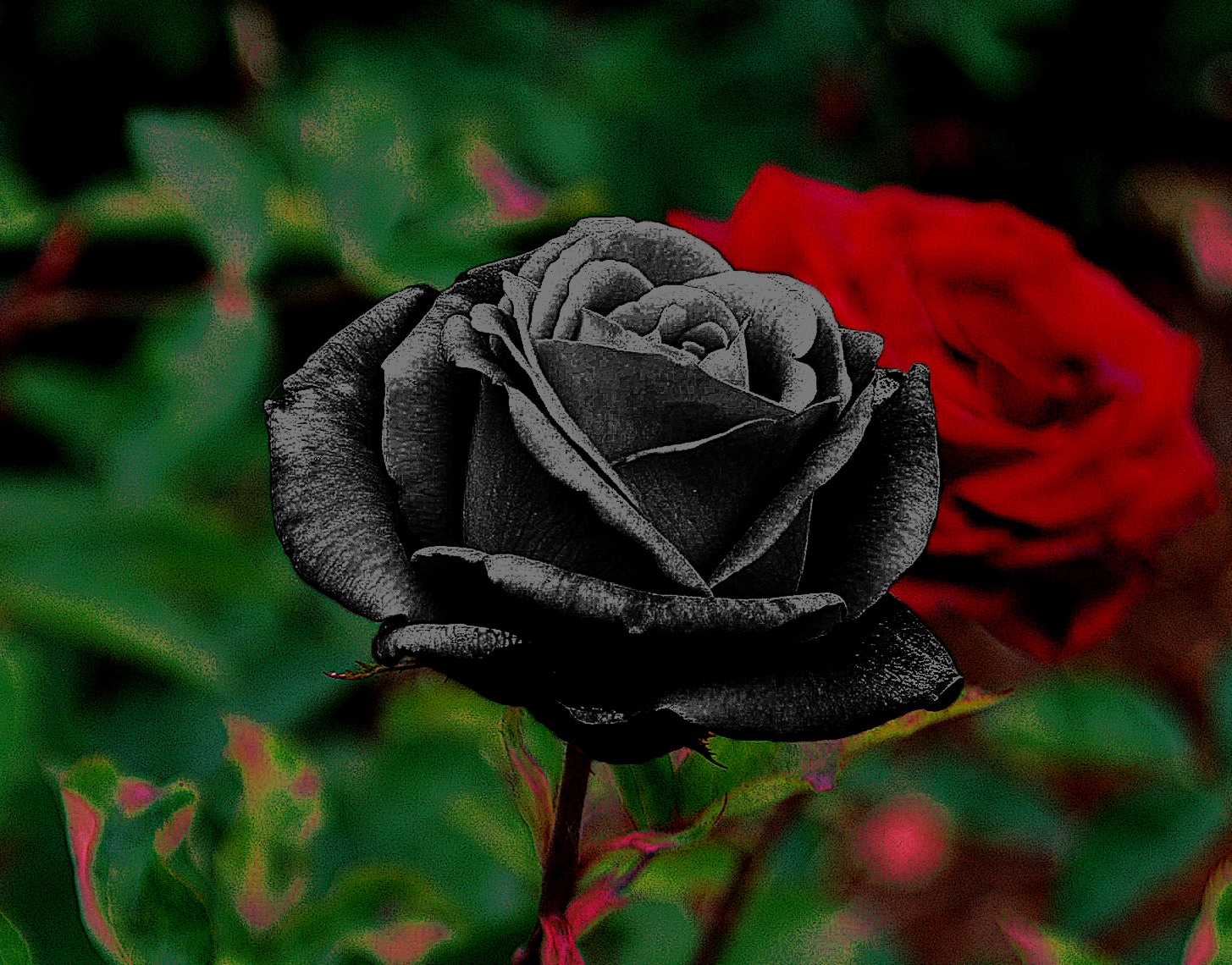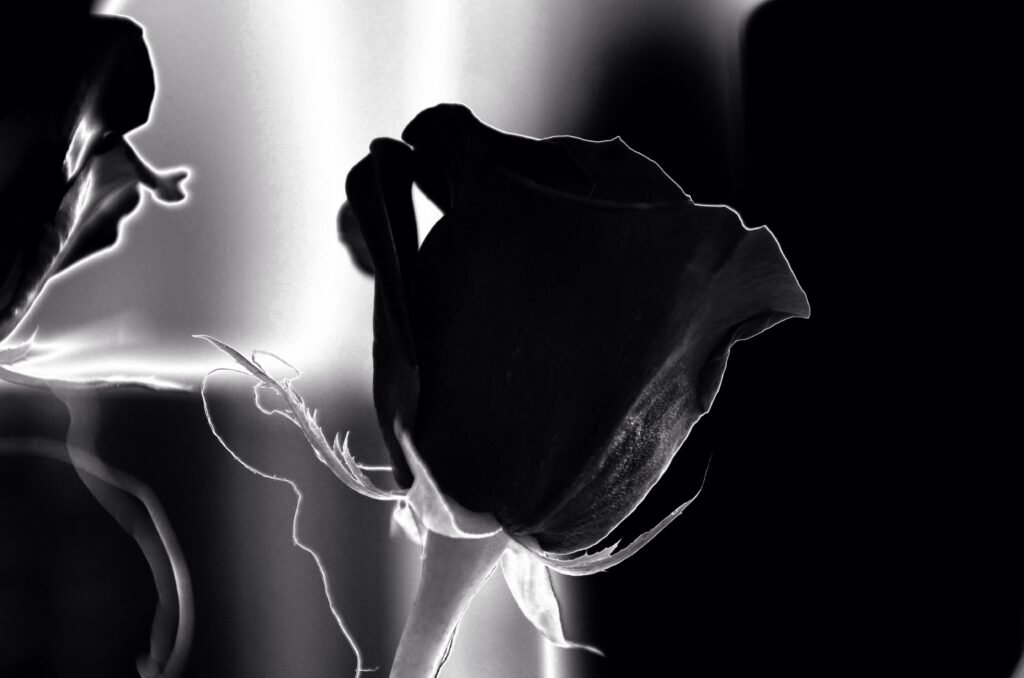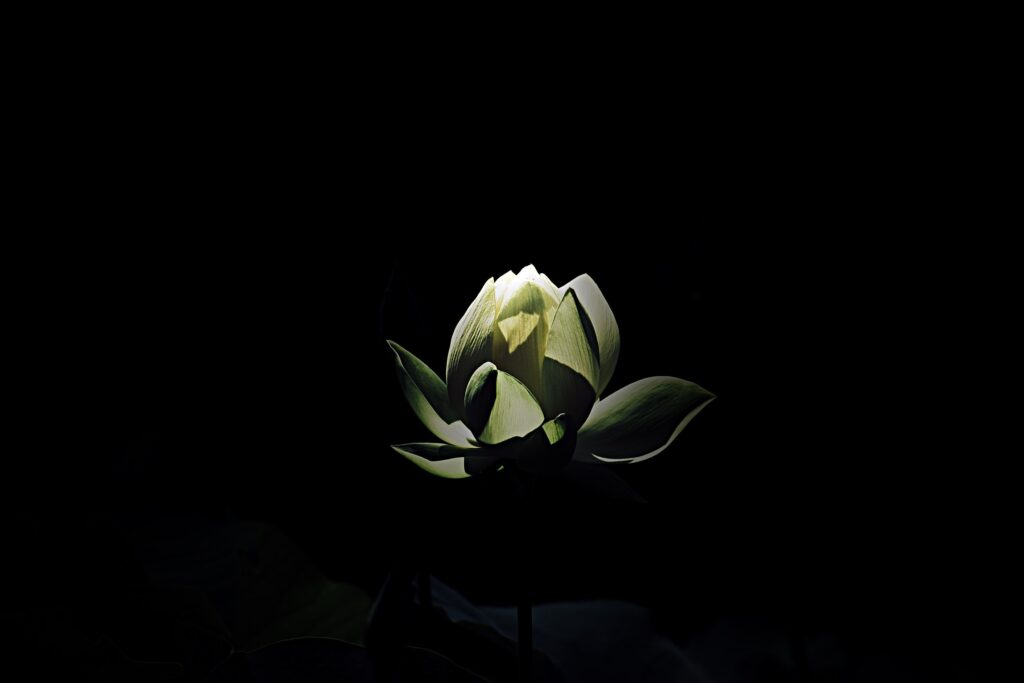Exploring the Symbolism of Flowers Representing Death – What Do They Mean

Step into the realm of floral symbolism, where blooms speak a language that transcends words. Flowers have forever been cherished as expressive messengers, conveying our deepest sentiments and reflecting the diverse tapestry of human emotions.
While s are commonly associated with joyous occasions like weddings and birthdays, they also possess the power to convey sorrow and loss. In fact, certain flowers have become synonymous with the concept of death, embodying the fragility and transient nature of life itself.
Among these intriguing symbols, the enigmatic black rose takes centre stage. Its velvety petals, as dark as a moonless night, have long been associated with mourning, farewell, and the sombre reality of mortality. But the black rose is not alone in its representation of death. Numerous other flowers, each with its unique significance, bear the weight of this profound symbolism.
Journey with us as we embark on a captivating exploration into the hidden meanings behind flowers that speak of death. Together, we will peel back the layers of symbolism surrounding gorgeous flower, the black rose, unravelling its secrets and delving into the rich tapestry of emotions it evokes. Along the way, we will encounter other flowers that share this realm of symbolism, shedding light on their profound messages and unveiling the intricate language of flowers.
Prepare to be captivated by the dark allure of black roses and immerse yourself in the profound world of floral symbolism. Let us guide you through this captivating journey, where the beauty of flowers merges with the contemplation of mortality. Get ready to unlock the secrets of flowers that whisper of death, as we unravel their hidden meanings and gain a deeper understanding of the intricate language they possess.
The Different Flowers Representing Death and Their Meanings
Flowers have an extraordinary ability to convey profound emotions and concepts, and when it comes to representing death, they take on a unique significance across cultures and traditions. Let’s explore some of the flowers that symbolize death and uncover the diverse meanings they hold.
Lilies, with their elegant and serene presence, are often associated with funerals and mourning. In many cultures, the white – lily flower represents the purity of the soul and is commonly used in funeral arrangements as a symbol of the departed’s restored innocence. Lilies also carry connotations of rebirth and the afterlife, representing the journey from earthly existence to spiritual transcendence.
Roses, known for their exquisite beauty and enchanting fragrance, also play a role in the realm of death symbolism. While black roses are often associated with death, the more common red and white roses hold their own meanings in this context. Red roses are frequently seen at funerals as a symbol of love and respect for the departed. White and pink roses can, on the other hand, signify purity, innocence, and heavenly grace, often used to express remembrance and offer solace to grieving hearts.
Chrysanthemums, particularly in Eastern cultures such as Japan and China, hold a deep association with death. These magnificent flowers are used extensively in funeral rituals, where they represent grief, loss, and the cycle of life and death. Chrysanthemums are considered sacred in these traditions and are seen as offerings to honour the deceased and express respect for their journey beyond this world.
In addition to these notable examples, there are many other flowers that carry death symbolism in various cultural and religious contexts. Marigolds, and red poppy, for instance, hold significance in Mexican culture during the Day of the Dead celebrations, where they are believed to guide spirits back to their loved ones. In some parts of Europe, the dark and mysterious black tulip is associated with death and farewell.
It’s important to note that the meanings attached to flowers representing death may vary across different cultures and religious beliefs. What may make flowers symbolize death and mourning in one culture might represent renewal or celebration of life in another. It’s the rich tapestry of these interpretations that adds depth and diversity to the language of flowers.
As we continue our exploration, we’ll delve deeper into the cultural and religious contexts surrounding these flowers and gain a greater understanding of how they are used to honour the departed, console the grieving, and offer solace in the face of loss. So, let’s embark on this enlightening journey and unravel the intricate meanings behind flowers that stand as silent witnesses to the finality of life.

The Historical and Cultural Significance of Flowers Representing Death
Flowers representing death hold a profound historical and cultural significance, transcending time and borders. They have not only played a role in art, literature, and mythology but have also found their place in funeral and mourning rituals across diverse cultures and traditions.
Throughout history, flowers associated with death have been depicted in various artistic forms, including paintings, sculptures, and poetry. Artists and poets have sought to capture the ephemeral beauty of life and the inevitability of death through the delicate petals of these symbolic blooms. From ancient Egyptian funerary art adorned with lotus flowers to European Renaissance paintings featuring melancholic roses, the imagery of flowers that represent death has served as a poignant reminder of mortality.
Literature has also embraced the symbolism of flowers representing death. In poetry and prose, authors have used floral motifs to convey themes of grief, loss, and the transient nature of existence. Flowers such as lilies, roses, and chrysanthemums have become literary symbols, evoking deep emotions and providing solace in times of mourning.
Mythology and folklore are replete with tales where flowers are intrinsically linked to death and the afterlife. In Greek mythology, the poppy flower symbolized eternal sleep and was associated with the realm of the dead. In Norse mythology, the mistletoe played a role in the death of the god Balder, highlighting the traditional flower and its association with tragedy and sorrow. These mythological narratives serve as a testament to the enduring connection between flowers and mortality in the human imagination.
In funeral ceremonies and mourning rituals, flowers have been a common presence across cultures. They serve as a way to honour the deceased, pay respects, and provide comfort to the grieving. Different cultures have specific flowers associated with death, and their use varies in funeral practices. For example, in many Western cultures, wreaths and bouquets of white lilies and roses are displayed during memorial services and funerals, symbolizing purity, remembrance, and the cycle of life.
In Eastern cultures, chrysanthemums hold great significance in funeral rituals. They are used to decorate altars, gravesites, and memorial spaces, representing grief and the transient nature of life. The vibrant marigolds of Mexico’s Day of the Dead celebrations, with their vibrant colours and distinct fragrance, are believed to guide spirits back to the world of the living, forming a bridge between life and death.
These cultural practices demonstrate the universality of the language of flowers, as they provide a means of expressing emotions and honouring the departed in times of sorrow. Flowers become powerful symbols that transcend language barriers and offer solace to those grieving the loss of a loved one.
The Contemporary Significance of Flowers Representing Death
Flowers representing death continue to hold a significant place in contemporary society, offering solace and a means of expressing emotions during times of mourning. In modern funerals and mourning rituals, these flowers play a vital role in honouring and remembering loved ones who have passed away.
The contemporary significance of flowers representing death lies in their ability to provide comfort, beauty, and a tangible expression of sympathy. They serve as a visual tribute, conveying heartfelt condolences, sympathy flowers and a shared sense of loss. Whether it’s the timeless elegance of lilies, the delicate petals of roses, or the solemnity of chrysanthemums, these flowers offer a language of compassion and support in the face of grief.
In modern funerals, floral arrangements and wreaths are commonly used to adorn the casket or the area where the service is held. White lilies, symbolizing purity and innocence, are often chosen to create a serene and peaceful atmosphere, honouring the departed and offering comfort to the bereaved. Roses, with their diverse colours and meanings, are carefully selected to reflect the relationship and emotions shared with the deceased. They can convey love, respect, and gratitude, serving as a tribute to a life well-lived.
Beyond funerals, flowers representing death are used in various ways to honour and remember loved ones who have passed away. Memorial gardens and remembrance spaces are often adorned with these flowers, creating a serene and contemplative atmosphere for reflection. Individuals may also choose to place flowers at gravesites, creating a personal connection and a visual representation of remembrance.
In addition to physical tributes, there are also contemporary practices that incorporate flowers into the process of mourning and honouring the deceased. Some individuals create memorial displays or altars in their homes, featuring photographs, candles, and flowers, serving as a focal point for reflection and remembrance. Others may choose to commemorate special dates or anniversaries by arranging flowers at a memorial site or engaging in acts of remembrance surrounded by the beauty and symbolism of these blooms.
Furthermore, the rise of online platforms and social media has given rise to virtual tributes and digital memorials. People can now send virtual flowers or create digital spaces to share memories, stories, and photographs, transcending geographical boundaries and allowing friends and family to come together in commemorating a deceased loved one.
The contemporary significance of flowers representing death lies in their ability to offer solace, comfort, and a tangible expression of remembrance. They serve as a way to honour and pay respects to loved ones who have passed away, allowing individuals to find solace and connection amidst the profound experience of loss. Whether in physical or digital form, these flowers continue to hold a sacred space in the hearts of those navigating the journey of mourning.

The Controversy and Criticism Surrounding Flowers Representing Death
While flowers representing death have long held a place in cultural and funeral traditions, there has been some controversy and criticism surrounding their use. Let’s delve into the arguments against using flowers to represent death and explore ways in which they can still be employed in a respectful and meaningful manner.
One of the criticisms centres around the perceived commercialization of funeral flowers associated with death. Critics argue that the funeral flower show industry often capitalizes on grief by promoting specific blooms and arrangements, potentially exploiting people’s emotions during a vulnerable time. This commercialization can sometimes overshadow the genuine sentiment behind the use of flowers in mourning rituals.
Another aspect that garners criticism is the perceived inauthenticity of using flowers to represent death. Sceptics argue that the symbolism attached to specific flowers has become clichéd and lacks personal meaning. They claim that the use of flowers in funerals and mourning has become more of a social convention rather than a genuine expression of emotions.
However, despite these criticisms, flowers can still be employed in a respectful and meaningful way to represent death. It is essential to approach their use with thoughtfulness and intention, acknowledging the individuality of the deceased and the specific cultural or personal significance attached to certain flowers.
One way to navigate this controversy is to prioritize personalization and authenticity. Instead of relying on generic flower arrangements, individuals can choose blooms that hold personal significance or reflect the personality and passions of the deceased. This personalized approach can imbue the floral tributes with genuine meaning and make them a more authentic representation of the individual being mourned.
Furthermore, considering alternative ways to honour the deceased beyond traditional floral arrangements can offer a fresh perspective. For example, incorporating sustainable practices by opting for locally grown, organic flowers or choosing to donate to charitable causes in the name of the deceased can add depth and purpose to the commemoration.
Additionally, exploring diverse cultural practices and traditions can provide inspiration for new ways to incorporate flowers into mourning rituals. Different cultures have unique customs that use flowers to symbolize death and remembrance, and by embracing these practices, we can broaden our understanding and find alternative ways to honour the departed.
Ultimately, the controversy and criticism surrounding flowers representing death highlight the need for thoughtful and personal approaches to mourning rituals. By moving away from commercialization and embracing authenticity, individuals can reclaim the significance of flowers as meaningful symbols in the face of loss.
As we continue our exploration, we will further examine ways in which flowers can be used in a respectful and meaningful manner, honouring the deceased while avoiding the pitfalls of commercialization and inauthenticity. Together, we will navigate the complexities of this topic and discover how flowers can still serve as powerful and heartfelt representations of death when approached with sincerity and mindfulness.
As we conclude our exploration into the symbolism of flowers representing death, we have delved into a rich tapestry of meanings and cultural practices that surround these blooms. Let’s recap the diverse flowers and their meanings that we have encountered along our journey.
Lilies, with their association with purity and rebirth, evoke a sense of serenity and the spiritual journey beyond earthly existence. Roses, whether red, white, or black, convey emotions of love, remembrance, and the sombre reality of mortality. Chrysanthemums symbolize grief, loss, and the cycle of life and death, playing a prominent role in Eastern funeral rituals. And Marigolds, with their vibrant colours, guide spirits back to living in the Mexican tradition of the Day of the Dead.
Throughout our exploration, we have witnessed the cultural and personal nuances attached to these and their symbolism. However, it is important to remember that the symbolic meanings of flowers representing death can vary across cultures, religions, and individual perspectives. It is a testament to the complexity and richness of human expression that such diverse interpretations exist.
In closing, I encourage you, the reader, to embark on your journey of exploring the symbolism of flowers representing death within your cultural and personal context. Look into the traditions and beliefs that shape your understanding of life, death, and remembrance. Discover the flowers that hold significance in your heritage and explore the ways in which they have been used to honour the departed and provide solace to the grieving.
The symbolism of flowers representing death is a profound and multifaceted realm, highlighting the intricate relationship between life, beauty, and the inevitability of mortality. It is a reminder of the universal experiences we all share, regardless of our cultural backgrounds or beliefs.
May this exploration serve as an invitation to contemplate the significance of these flowers in your own life and to approach them with reverence and respect. Let us celebrate the diversity of cultural practices and individual expressions, recognizing the power of flowers to convey emotions, honour the departed, and provide solace in times of grief.
In the delicate petals of these blooms, we find a language that transcends words, carrying the weight of our deepest emotions and reflections on the impermanence of life. So, let us continue to uncover the hidden meanings, embrace the complexities, and honour the significance of flowers representing death in the mosaic of our shared human experience.